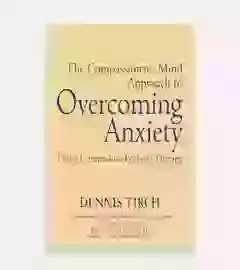What keeps anxiety going?
We can see that the response to stress can itself be distressing. The physical changes may be alarming, or the emotional or behavioural changes may make it harder to cope. When the natural stress response causes more stress in this way, a cycle is established. The maintenance of such cycles is the root of all forms of anxiety-related problem. In order to break the pattern, it is necessary first to identify the cycles that keep you feeling anxious.
Bodily maintaining cycles
The physical experience of anxiety can be alarming, especially if it's misinterpreted. For example, respiratory changes may be interpreted as 'I can't breathe', or light-headedness as 'I'm going to collapse'. If the symptoms are extreme they can generate a fear of the symptoms themselves. Physical symptoms such as shaking or sweating can also affect you, undermining your confidence and making the symptoms worse. In each case, the stress response produces more stress.
Psychological maintaining cycles
Anxiety-related problems tend to be associated with an overestimation of danger coupled with an underestimation of your own coping resources. This 'biased thinking' can lead to more distress, which then makes your perception of the situation and your ability to cope even more distorted. There are a number of common 'thinking biases'.
Catastrophizing is anticipating disaster as the only outcome. It's particularly associated with physical symptoms - for example, chest pain may be perceived as a heart attack.
Black-and-white thinking means seeing everything in all-or-nothing terms, for example 'I always feel this bad,' rather than 'I feel bad at the moment but could get better with help.' A common form of black-and-white thinking is expecting perfection in yourself, and feeling that if something isn't perfect you have failed.
Exaggerating is the process of magnifying the negative or frightening aspects of your experiences. It is often associated with overgeneralizing and jumping to alarming conclusions.
Ignoring the positive is the process of mentally filtering out positive and reassuring facts and events, for example not noticing compliments or acknowledging achievements.
Scanning is searching for the thing you fear, which can increase the likelihood of encountering that thing, as well as resulting in false alarms.
Mood changes can also affect the ability to cope with stress. Constant anxiety can be demoralizing and create a feeling of hopelessness, which then undermines your coping ability.
Behavioural maintaining cycles
It's natural to respond to danger by fleeing from it or avoiding it. However, avoidance of danger that isn't real but only perceived can keep anxiety going because it prevents you from learning to cope. Avoidance may be direct (for example, not going out in public), but can also take other forms. One common avoidance behaviour is using stimulants, such as cigarettes, tea or coffee, in response to stress. This is counterproductive because the nicotine or caffeine encourages the release of adrenaline, which promotes further stress symptoms. Alcohol, too, though a sedative in the short term, becomes a stimulant when it is metabolized. If food or drugs are used as a long-term coping strategy they can cause physical changes which themselves become a source of anxiety.
Another behavioural cycle is the constant seeking of reassurance. Although assurance is useful if it helps you to deal with your fears, it's not helpful if you don't accept the reassurance and have to keep going back to hear it again. This can also put a strain on relationships.
Social maintaining cycles
Not all maintaining cycles are about your own responses. Sometimes problems are perpetuated by stressful situations or by the actions of others - such as stress at work or domestic difficulties. An anxiety problem may also be maintained by good intentions on the part of others if this helps you to avoid the thing that you fear.




























